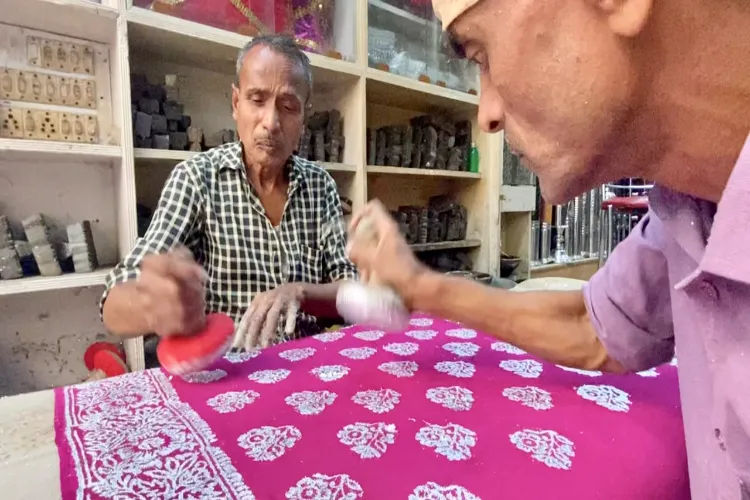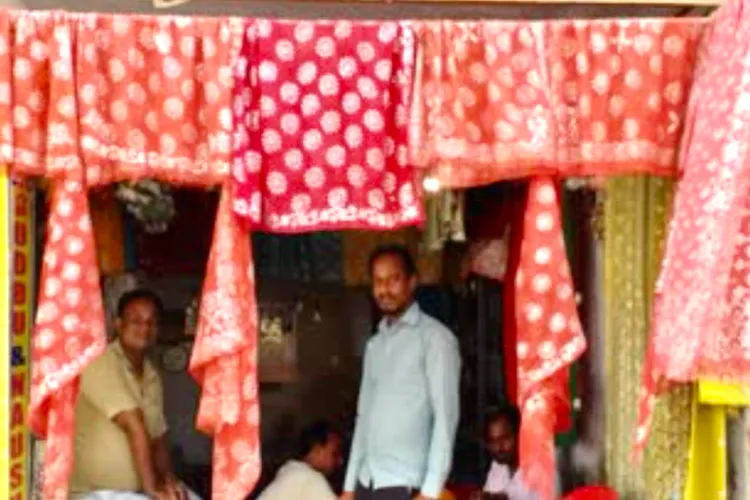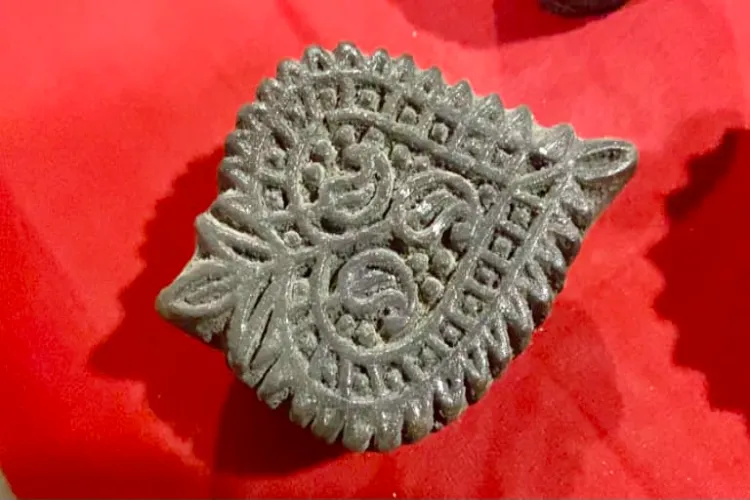
Seraj Anwar/Patna
India is the only country in the world where the people of each region, religion, and community have their distinct cultural identity and have conserved it over the ages be it the cuisine, lifestyle, or attire.
Likewise, in Bihar, the traditional wedding couture of Muslims called Chaapa, is a must-have today for a bride as it was perhaps centuries ago when the man could make patterns on cloth only by using wooden blocks.
This Chappa couture has not lost its popularity and sanctity even in the modern time when fashion has gone global. The charm of Chappa transcends the economic strata and even the borders among the Muslims.
No marriage in Muslim families of Bihar is considered complete without Chappa couture. The interesting thing is that the profession of printing is done by the Rangrez community, who are socially and economically backward people.
In a way, the Chappa connects the Muslims of Bihar to their roots. Places like Biharshreef, Aurangabad, Darbangga, and Sabzibagh of Patna, are hubs of this ancient art of printing.
On the day of Nikkah, the bride wears the clothes sent by the groom's family. The nikah ceremony is performed with the bride wearing the traditional Chappa wear sent by the groom's side.
The history of the Chappa dates back to the beginning of the 19th century. Dr. Francis Buchanan, who had come to India as an employee of the East India Company has written an article in his magazine sometime between 1811 and 1812, where he mentions the art of Chappa printing.
Buchanan had visited various districts in Bihar other than Gaya. He mentions the importance of families involved in promoting this art.

Chappa dress material on display in shops in Patna
There is a history to the tradition of Chappa. According to an old tradition, Muslim families used to wear printed clothes only during wedding ceremonies. However, with time, due to the new fashion, the custom of wearing printed clothes became normal, and yet people have maintained the sanctity of hand-printed clothing for special occasions like Weddings.
According to customs, the groom's family gives various gifts to the bride and her relatives that the locals call Dala. All these clothes that are part of Dala are printed, very much like the bride.
The silver tabs are printed on the saree, suits, garaarah, sharaarah (a traditional Muslim wedding outfit), lehenga, and other dresses from the designer block made of wood.
Apart from this, bedsheets and curtains are also printed with wooden blocks. It is also customary to gift a handkerchief with an imprint of the groom's hand in it on the wedding day.
Mustakim Akhtar Rangrez, the national convener of Rangrez Jagran Manch, claims that the silver section in the Chaapa couture is important from a medical point of view, it energizes the wearer.

A wooden printing block used for making Chappa
Chaapa clothes are popular not only in Bihar but also among the Biharis living across India and abroad. Apart from Pakistan, Bangladesh, America, Canada, and Australia, Bihari Muslim families living in any corner of the world prefer Chappa for weddings.
According to Muhammad Mustafa, a merchant, people think that the wedding ceremony is incomplete without block printed clothes. Mustafa sends the hand-printed clothes to the Bihari families settled in different corners of the world and also in Bihar's markets.
Mustafa explains that after the partition, some Bihari families had migrated to Pakistan but they still maintain their tradition of using Chappa for weddings.
Before the Covid-19 pandemic, he exported Chappa clothes to countries other than Pakistan. He said that with the changing fashion, changes are also being made in the design. According to Wasim, an artisan, Chappa dress material is sold in large numbers during the wedding season.
The dye is made from chemicals and printing is done in layers. The blocks generally have a delicate design of flower petals and other floral motifs engraved. These chemicals are cooked with a binding agent like Fevicol in boiling water to high temperatures.
The liquid is applied to a wooden block and imprinted on the clothes. The silver forms the top layer while printing and therefore it wears off after a few washes. However, the design doesn't lose its sheen. Artisan Mohammad Naushad says that he works with chemicals. It costs him Rs 500-600 to print a saree whereas he sells it for Rs 1000 and makes a good profit.
He is happy at the sudden rise in demand for his printed clothes in the marker. He makes clothes for women of all ages. The specialty of Chappa cloth is that it is very cheap. Says Ghazala Parveen, a resident of New Karimganj in the city. It is said that the beauty of the bride increases with printed clothes.

An artisan making patterns with wooden block
Bihar's Chief Minister Nitish Kumar has also formed Rangrez Artisan Development Committee to save this business from extinction and for its development. However, the committee is not yet active due to red-tapism.
Mustakim Rangrez Awaaz, a member of the committee, says, "It is said that if this committee starts functioning fully, the pain and suffering of the professionals associated with it would be lessened."
The committee was duly constituted on 17th September 2019 to make the block printing professionals self-reliant.
says that the printing business needs to be encouraged and it has a niche market. It should get the status of industry on the lines of the Khadi village industry.
Like the Khadi Mall, a print cloth mall should be established to encourage this art. The purpose of the formation of the committee was to provide capital to the cottage industry business to stand in the market.
